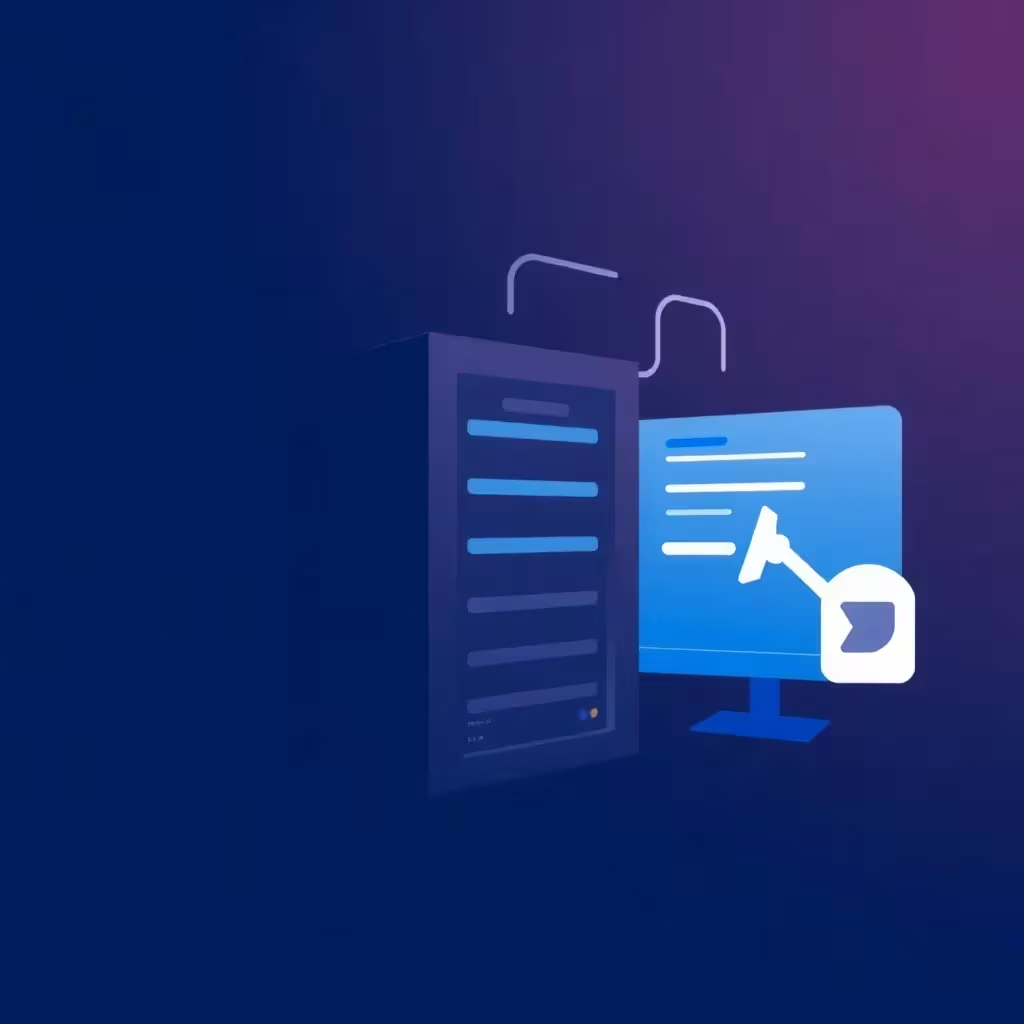Introduction to Headless CMS
In the rapidly evolving digital landscape, the concept of the headless content management system (CMS) is becoming increasingly important. It promises to revolutionize the way companies manage and present their content. But what exactly is a headless CMS and why could it represent the future of content management?
What is a headless CMS?
At its core, a headless CMS is a content management system that separates the content from the presentation layer. Unlike traditional CMS solutions, where content creation and presentation are closely interwoven, a headless CMS acts purely as a content hub. It stores and manages content, but makes it available via APIs (Application Programming Interfaces) so that it can be displayed on any platform and device.
Advantages of a headless CMS
This decoupling of content and presentation has a number of advantages. First of all, it allows for much greater flexibility in content delivery. Content can be created once and then distributed seamlessly across different channels - be it on websites, in mobile apps, on IoT devices or even in virtual reality environments. This meets the growing need for omnichannel experiences and enables companies to reach their target groups wherever they are.
Another key advantage of the headless approach is the improved developer friendliness. Front-end developers are no longer bound by the specifications of a monolithic CMS, but can use the technologies and frameworks of their choice to create optimal user experiences. This promotes innovation and makes it possible to react more quickly to new technological trends.
A headless CMS also offers advantages in terms of scalability and performance. As content and presentation are separate, both aspects can be scaled independently of each other. This often leads to faster loading times and better performance, which can have a positive impact on the user experience and SEO ranking.
For content creators, the transition to a headless CMS means focusing on the essentials: creating high-quality content. They no longer have to worry about the technical aspects of presentation, but can concentrate fully on the quality and relevance of their content. Many headless CMS also offer user-friendly interfaces that make work easier even for non-technical users.
Future viability of headless CMS
Future viability is another aspect that speaks in favor of headless CMS. At a time when digital technologies are developing rapidly and new channels and platforms are constantly emerging, the headless approach offers the flexibility needed to keep pace with these changes. Companies can more easily integrate new technologies such as AI, voice search or blockchain into their content strategy without having to change their entire CMS.
An interesting trend that is emerging in the area of headless CMS is the development of hybrid solutions. These combine the flexibility of a headless system with some of the user-friendly functions of traditional CMS. Such systems could bridge the gap between the needs of developers for flexibility and the wishes of content creators for ease of use.
The integration of artificial intelligence and machine learning in headless CMS is another promising trend. AI could, for example, help with the automatic categorization of content, the creation of metadata or the personalization of content. This would further increase the efficiency of content creation and management and at the same time increase the relevance of the delivered content for end users.
Headless CMS also offer interesting possibilities in the area of content personalization. The separation of content and presentation makes it easier to dynamically adapt content to different user groups or even individual users. This could lead to a new era of highly personalized digital experiences.
Implementation and challenges
Despite these advantages, switching to a headless CMS is not without its challenges. Implementation can be more complex than with traditional systems and often requires specific technical expertise. The lack of an integrated preview function can also mean a change for some users. In addition, companies need to carefully consider whether the headless approach suits their specific needs and resources.
Comparison with traditional CMS
Compared to traditional CMS such as WordPress or Joomla, a headless CMS offers greater flexibility and scalability. While traditional CMSs often have a close integration of backend and frontend, headless systems allow both areas to be developed independently. This can be particularly advantageous for companies with complex or diverse digital marketing strategies.
Examples of headless CMS
There are a variety of headless CMS on the market, each with their own strengths and specializations. Some of the best known are:
- Contentful: A popular headless CMS that is characterized by its user-friendliness and extensive API support.
- Strapi: An open source headless CMS that offers developers a great deal of flexibility and can be easily adapted to individual requirements.
- Sanity: Known for its real-time collaboration functions and the ability to structure content flexibly.
These systems offer different functions and price models so that companies can choose the right CMS to suit their requirements.
Cost considerations
The cost of a headless CMS can vary, depending on the specific requirements and the chosen provider. Many headless CMS offer different pricing models, ranging from free open source options to commercial solutions with extensive features and support. It is important to carefully weigh up the long-term costs and expected benefits to make the best decision for the business.
Security in headless CMS
Another important aspect when choosing a headless CMS is security. As content is provided via APIs, these interfaces must be well secured to prevent unauthorized access. Many modern headless CMS place great emphasis on security and offer comprehensive measures such as authentication, authorization and data encryption to ensure the integrity and confidentiality of content.
Migration strategies to a headless CMS
Migrating from a traditional CMS to a headless system requires careful planning and implementation. Important steps here are:
- Inventory: Analysis of existing content and structures.
- Planning: Definition of the objectives and requirements for the new system.
- Implementation: Migration of content and adaptation of front-end technologies.
- Testing: Ensuring that all content is displayed correctly and that performance meets expectations.
- Training: Instruction of employees in the use of the new system.
Thorough preparation can help to avoid potential problems and ensure a smooth transition.
Use cases and industries
Headless CMS are particularly advantageous in industries with complex or diverse digital requirements. Examples of this are
- E-commerce: Flexible integration with different sales channels and adaptation to different user experiences.
- Media and publishing: Fast and consistent distribution of content across multiple platforms.
- Corporate websites: Adaptation to different user groups and easy integration of new technologies.
With the ability to efficiently distribute content across multiple channels, Headless CMS helps companies strengthen their digital presence and remain competitive.
SEO advantages of Headless CMS
The importance of headless CMS for SEO should also not be underestimated. The ability to deliver content quickly and consistently across different channels allows companies to make their online presence more effective. In addition, the flexibility in front-end development enables the implementation of SEO best practices, which can have a positive effect on search engine rankings. Fast loading times and good performance are also decisive factors for a good SEO ranking, which are supported by the separation of content and presentation.
Microservices architectures and headless CMS
Another aspect that speaks for the future viability of headless CMS is its suitability for the use of microservices architectures. At a time when many companies are breaking up their monolithic IT systems into smaller, more flexible units, headless CMS fit perfectly into this trend. They can be easily integrated into a microservices architecture and thus support the agility and scalability of modern IT infrastructures.
Conclusion
In conclusion, headless CMS may not be the only future of content management, but they will definitely play an important role in this future. They offer the flexibility, scalability and future-proofing that many companies need in the fast-moving digital world. At the same time, these systems are constantly evolving, integrating new technologies and adapting to the changing needs of businesses and users.
The decision for or against a headless CMS should always be based on a thorough analysis of individual requirements and goals. However, for many companies, especially those with complex digital ecosystems or the need for innovative, cross-channel user experiences, a headless CMS could be the key to a flexible, future-proof content strategy. In any case, it's important to keep an eye on developments in this area, as they could fundamentally change the way we create, manage and present digital content.
Future prospects and innovations
The further development of Headless CMS remains exciting, as new functions and integrations are constantly being added. Future prospects include the increased use of artificial intelligence to automate content processes and the expansion of API functionalities to enable even more versatile applications. In addition, increased integrations with other digital tools and platforms could further increase the efficiency and effectiveness of content strategies.
Companies that focus on these developments at an early stage can gain a competitive advantage by managing and presenting their digital content more effectively. An agile and scalable content management system is increasingly becoming a strategic asset in the digital transformation of many companies.
Recommendations for choosing the right headless CMS
When selecting a suitable headless CMS, companies should consider the following points:
- Needs analysis: Clarify what requirements your company has for a CMS and which functions are absolutely necessary.
- Flexibility and scalability: Ensure that the CMS you choose can keep pace with your future growth plans and technological developments.
- User-friendliness: Make sure that the system is intuitive to use and enables easy content management.
- Support and community: A good support system and an active community can provide valuable help with problems and questions.
- Costs: Consider both the initial and ongoing costs and compare them with your budget and benefits.
By making a careful selection, companies can ensure that they find a headless CMS that best suits their needs and can be used successfully in the long term.



